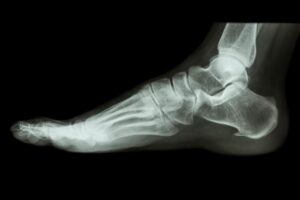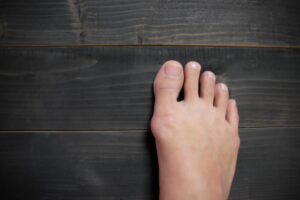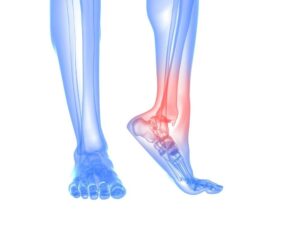New to Running? Avoid These Common Repetitive Stress Injuries

A running routine keeps your heart healthy, your bones and muscles strong, and does wonders for your overall health. If you enjoy running to stay in shape, the last thing you want is an injury that keeps you on the sidelines for weeks or months.
With the right healthy habits, you can prevent many running injuries from ever occurring. Ryan Golub, DPM, and Zachary Flynn, DPM, AACFAS, Arizona Foot Health’s podiatrists in Phoenix, AZ, share the most common repetitive stress running injuries and how to prevent them.
What are repetitive stress injuries?
When you run, your body is doing certain types of movements repeatedly. Continuing to make these movements on multiple runs per week for extended periods can strain your feet, ankles, and legs.
Running is also a high-impact sport, which leads to further stress on the lower body. This can result in getting repetitive stress injuries related to overuse of the muscles, tendons, and bones you use most in running.
Common running repetitive stress injuries
If you’re an avid runner, these are some of the most likely repetitive stress-related injuries you can experience.
Achilles tendinitis
Achilles tendinitis occurs when your Achilles tendon, the large tendon extending right above your heel, develops inflammation. You’re more likely to get injured if you have tight calf muscles and take extended runs.
Plantar fasciitis
Plantar fasciitis is the inflammation of your plantar fascia, a band of tissue on the bottom of your foot. This common running injury tends to happen when you rapidly increase the amount you run or have weak or tight calves.
Runner’s knee
Also known as Patellofemoral syndrome, runner’s knee causes pain in one or both kneecaps. You have a greater risk of developing this if the muscles surrounding your knee are weak.
Shin splints
Shin splints cause you to feel pain in one or both of your skin bones on your lower leg. Quickly increasing your running mileage makes you more prone to shin splints.
Stress fracture
Repetitive stress on any bone can cause you to develop a stress fracture, which is a tiny crack in the bone. As a runner, you’re most likely to get these in your heel, the top of your foot, or lower leg.
Preventing repetitive strain running injuries
If you’re a new runner or getting back into running after a break, making careful choices lowers your risk of overuse injuries. Running too much, too quickly, is one of the most common reasons you get repetitive stress injuries, so avoid increasing your mileage by more than 10% a week.
Choosing the right footwear, including wearing a custom orthotic, keeps your feet supported and less likely to get injured from running. Make sure to change your shoes regularly to avoid wearing them out.
Other prevention techniques that help runners are to:
- Warm up fully before running
- Stretch after your run
- Run on soft surfaces
- Keep all your muscles strong
- Take regular rest days from running
If you’re starting to experience any pain or discomfort, listen to your body and rest to prevent the problem from becoming more serious.
If you develop continued pain or other symptoms related to running, our team can help you with sports medicine treatment to get you back to running as soon as possible. This can include medication, rest, physical therapy, and regenerative medicine.
As an avid runner or someone considering taking up running or a sport, our team can help you choose the right footwear and prevent or treat injury. Contact us to make an appointment.
You Might Also Enjoy...
The Achilles Heel
Given Arizona’s climate, patients are able to remain active year round. It’s why we all chose to live here. But…
Alleviating Back Pain and Other Benefits of Custom Orthotics You Didn’t Know About
Would you ever imagine that custom foot orthotics could improve your quality of life? That’s what many people say after…
9 Helpful Tips to Prepare Your Home Before Bunion Surgery
When moderate interventions, such as wearing wider shoes or using pads in your shoes, fail to ease your bunion pain…
When Should You Go to the Doctor for an Ingrown Toenail?
In most cases, you can nurse an ingrown toenail at home with over-the-counter pain medication, topical antibiotic creams, and soaking…
6 Home Exercises to Keep Your Ankles Strong
Ankles that feel wobbly and weak are vulnerable to injury. If you play sports, run, jump, or just walk often,…
Is Surgery My Best Option For Treating Bunions?
You have a bunion and it isn’t pretty, but if your bunion is small enough, or doesn’t hurt, you may…






